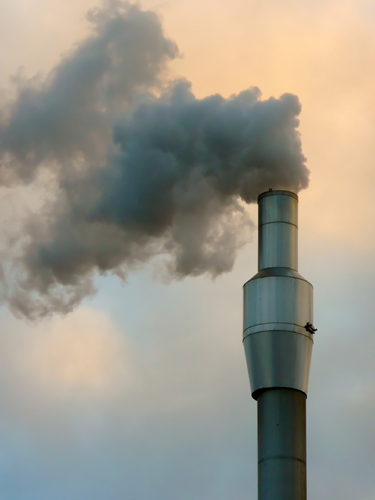
Environmental pollution is a significant problem in many large cities around the world and anti-pollution skincare is a hot new trend coming out of Asia. A significant number of studies have examined the effects of pollution on the ageing of the skin and found some alarming results.
Pollutants are very diverse, from some airborne components such as Ozone or Nitrogen Dioxide to industrial residues such as polycyclic aromatic hydrocarbon and nanoparticles. The effect that these pollutants can have on the skin depends of course on the daily environmental exposure. This exposure will vary from location to location and between individuals. However, if you live in a large polluted city then it is very likely that your skin is being exposed to significant pollution every single day.
Effects of Pollution on the Skin
Researchers have found the following effects of pollution on the skin:
- Ozone in photochemical smog appears to speed up skin ageing, by depleting Vitamin E levels in the skin, interfering with wound-healing processes and causing oxidative stress.
- Skin exposed to pollution areas experiences a higher sebum secretion rate, when compared to non-polluted areas.
- There is a tendency of the cutaneous pH to decrease when exposed to pollution. One study found a higher a significantly higher amount of lactic acid in the skin in polluted areas compared to non-polluted areas.
- Squalene and vitamin E are the main antioxidants at the surface of the skin. Squalene is decreased in polluted areas, as this antioxidant is mobilised to combat oxidative stress in the skin. Low values of both these two antioxidants is normally associated with dry skin which may be a side effect of pollution.
- Cholesterol in the skin is decreased when exposed to pollution.
Scientific studies into Pollution and Skin
Globally, studies have found a tendency to find more skin problems in the more polluted areas of the world. Research is still ongoing into the skin’s deep layers’ reactions to pollutants.
Skin Pollution Research in China
 One study was undertaken during summer 2008 in two different districts of Shanghai, on 159 local residents: 79 subjects from Xu Jia Hui (a centre Shanghainese area), more exposed to pollution, and 80 subjects from Chong Ming, an agricultural region closely located north of Shanghai (<100 kms) and less exposed to pollution, according to official data. Researchers then measured various skin parameters, and feedback from volunteers was collected through a questionnaire.
One study was undertaken during summer 2008 in two different districts of Shanghai, on 159 local residents: 79 subjects from Xu Jia Hui (a centre Shanghainese area), more exposed to pollution, and 80 subjects from Chong Ming, an agricultural region closely located north of Shanghai (<100 kms) and less exposed to pollution, according to official data. Researchers then measured various skin parameters, and feedback from volunteers was collected through a questionnaire.
The study demonstrated significant differences in several biochemical parameters measured in the rural Chong Ming area, as compared to the urban Shanghai area, with an increased ratio of squalene/lipids, a lower level of lactic acid and a better cohesion of stratum corneum. Both sebum excretion rate and sebum casual levels did not differ between the two districts. The volunteer’s feedback suggested a perceived link between pollution and their skin problems.
Skin Pollution Research in Mexico
A similar clinical study was performed on 96 people in Mexico City (exposed to pollution) and 93 people in Cuernavaca (less exposed to pollution). Both biochemical and clinical skin parameters were studied.
The study demonstrated significant quantitative and qualitative modifications of parameters related to sebum excretion in Mexico City compared to Cuernavaca: the participants in Mexico City noticed an increased level of sebum excretion rate, a lower level of vitamin E and squalene in sebum, an increase of lactic acid and a higher erythematous index (redness) on the face of the subjects.
How to formulate Anti-Pollution Skincare
What is anti-pollution skincare? It will either include products that prevent skin damage caused by pollution, or products that rectify skin damage caused by pollution – or both.
When you’re formulating with the overall aim of providing anti-pollution skincare, you should aim to incorporate high antioxidant levels into the overall skincare product. Living in a highly polluted area means that often your skin may feel as if it has a thick layer of grime and grease on your skin, so gentle cleansing products will be important. You may also wish to account for higher levels of sebum production by formulating skincare which has a balancing effect on the oil levels of the skin. Barrier repair functionality is also a key point to consider, as cholesterol levels are low in the skin exposed to pollution. Some people may find that pollution has a drying effect on their skin given depleted antioxidant levels...
Visit www.formulabotanica.com for details.
Visit www.formulabotanica.com for details.
References
- Lefebvre, M.A. et al. 2015. Consequences of urban pollution upon skin status. A controlled study in Shanghai area. Int. J. Cosm. Sci. 2015 Aug 20. http://www.ncbi.nlm.nih.gov/pubmed/26291783
- Lefebvre, M.A. et al. 2015. Evaluation of the impact of urban pollution on the quality of skin: a multicentre study in Mexico.
Int. J. Cosm. Sci.2015 Jun;37(3):329-38. http://www.ncbi.nlm.nih.gov/pubmed/25655908
Want to formulate anti-ageing products for your skincare range? Enrol for Formula Botanica’s Certificate in Organic Anti-Ageing Skincare today.
Lorraine Dallmeier is a Biologist / Environmental Scientist and eLearning Entrepreneur. She is the Director of Formula Botanica, the world’s leading accredited Organic Cosmetic Science School for people wanting to launch or grow their organic skincare business. Over 1,600 students in 85+ countries have now followed Formula Botanica’s courses to make high performance, professional organic cosmetics.
No comments:
Post a Comment